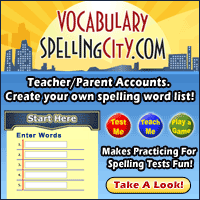I've been attracted to classical education since I first began researching homeschool methods. "Living" books are so much more interesting than textbooks, and there's a lot to learn that isn't offered in the typical curriculum. I don't remember ever being introduced to the great artists until I began teaching art appreciation to my own children.
Classical education is language-based, rather than image-based. Some of our family's most successful learning experiences have centered around a good book! When lively discussion accompanies shared reading of a story, my children absorb information without even realizing it. I've found this method to be much more effective than giving them a book to read and a test to follow.
Classical education also recognizes that all knowledge is interrelated. Especially in a home school setting, it isn't necessary to neatly compartmentalize the various subjects, studying social studies from 8:00 - 9:00, science from 9:00 - 10:00, and so on. Becoming immersed in an excellent storyline allows a student to experience cultures, explore history, appreciate art and music, and assimilate scientific facts in a natural manner.
With this philosophy, it might surprise you to learn that I have used an animated, online program for our family's core curriculum for the past several years. Time4Learning is image-based learning at its finest, and the very idea might at first cause die-hard classical educators to cringe. I've found it to be an excellent companion to our unit studies, enriching my children's educational experience and even improving our family life.
Classical education is an excellent way to teach history, geography, and science. Although it provides some practical application of reading and language skills, classical education is deficient in math instruction and formal phonics and grammar lessons. These subjects must be taught separately.
Classical educators naturally look for classic, textbook-based math and language programs to complement their eduational philosophy. Frankly, I've found these programs to be incredibly dull, full of rote memorization and drill. One of the attractions of classical education is that parents and children usually find their studies fascinating. It seems contradictory to choose a math program that bores your students to tears.
Another thing that's important to a classical educator is a well-rounded education. In attempting to provide a variety of learning opportunities, classical educators often focus completely on "classic" material, ignoring important new skills their student will need to succeed in today's world.
Classical education requires a lot of time from a homeschooling parent. After the planning, a parent must be directly involved in most of the instruction. While many of us enjoy this time with our children, it is difficult to sustain that level of interaction on a daily basis. When "life" gets in the way, unit studies are hit-and-miss.
Enter Time4Learning! This program's phonics and language arts programs are among the most engaging I have seen. My kids actually look forward to those two subjects. The lessons are visual learning in the extreme: highly interractive, silly, and loads of fun. By using an online program for language and math, I think my children get the best of both worlds: a classical education with a twist! That's MY idea of a well-rounded education. Since the computer lessons are generally done independently and the program even grades their work, more of my time is free. I can use it to enrich our unit studies or even to catch up on the housework. And my kids are learning important computer skills without even trying.
Time4Learning is a complete core curriculum, aligned with state standards. Combined with unit studies for enrichment, it has helped me provide my kids with a quality education and kept more of my time available for the million things that might arise in a homeschool mom's life. Even on days that Time4Learning is all we do for school, I know we've done more than enough.
Reading Comprehension
2 years ago


